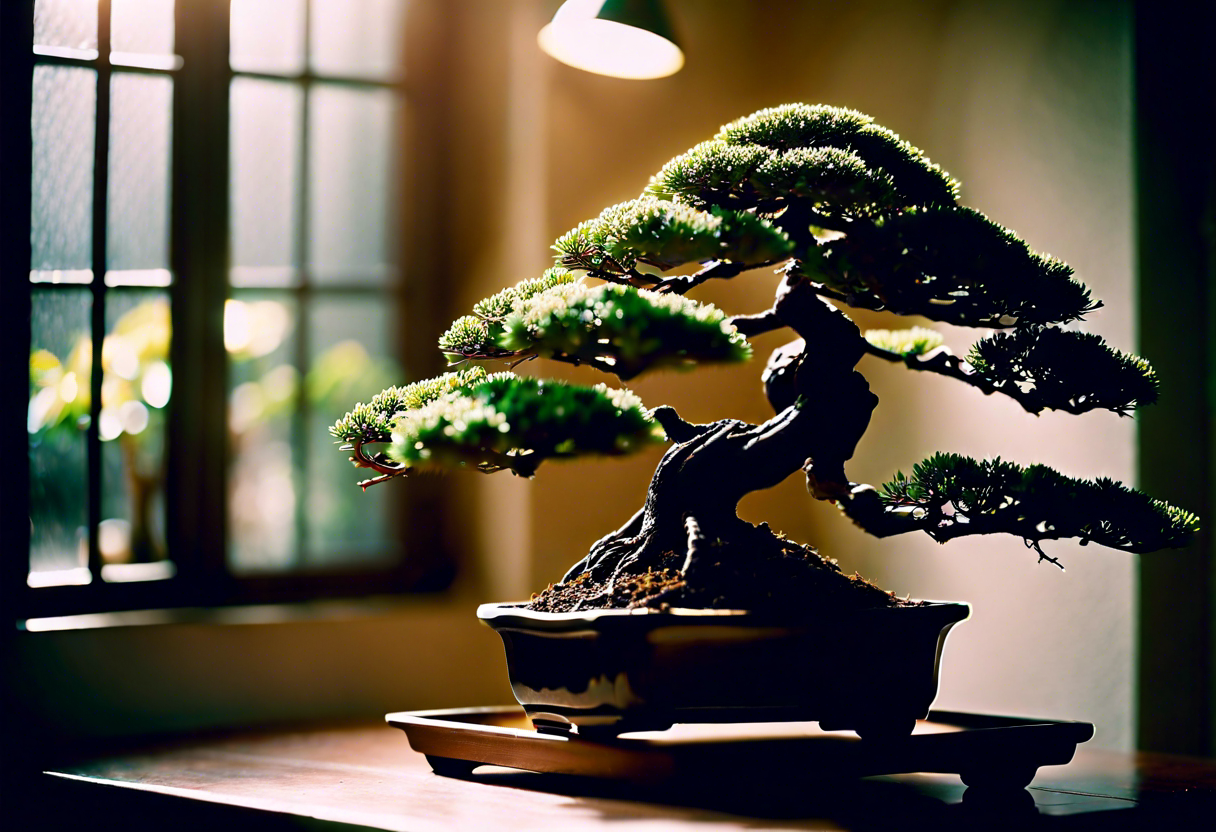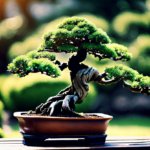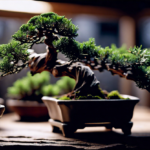How Long Does It Take a Bonsai Tree to Grow?
When it comes to the growth timeline of a bonsai tree, patience is key. The time it takes for a bonsai tree to grow largely depends on the type of tree, its age, and the care it receives. On average, it can take anywhere from a few months to several years for a bonsai tree to reach its full potential.
Generally, from seed to a fully developed bonsai tree, it can take around 5 to 10 years. However, this timeline can vary significantly based on different factors such as the species of the tree, the size of the tree you want to achieve, and the growing conditions provided.
For example, fast-growing species like the Chinese Elm or the Jade tree can develop into a bonsai tree much quicker compared to slower-growing species like the Japanese Maple or Pine trees. With proper care and attention, you might see visible changes in your bonsai tree within a few months to a year.
It’s important to remember that bonsai cultivation is a form of art that requires dedication and time. The process of growing a bonsai tree is not just about waiting for it to grow but also about shaping and training it to achieve the desired look. Regular pruning, wiring, and repotting are essential practices that contribute to the healthy growth and development of a bonsai tree.
While the exact timeline for a bonsai tree to grow varies based on multiple factors, what remains constant is the need for ongoing care and maintenance to nurture its growth. By providing the right conditions and attention, you can enjoy watching your bonsai tree thrive and evolve into a stunning miniature masterpiece over time.
Factors Influencing the Growth Rate of Bonsai Trees
When cultivating a bonsai tree, understanding the factors that influence its growth rate is crucial for its development and overall health. Several key elements can impact how quickly a bonsai tree grows and thrives.
1. Species of Bonsai Tree: Different species of bonsai trees have varying growth rates. For instance, the Chinese Elm grows faster compared to the Japanese Maple, which tends to grow more slowly. It is essential to choose a species that aligns with your desired growth pace.
2. Environmental Conditions: The environment in which a bonsai tree is placed plays a significant role in its growth rate. Factors such as sunlight exposure, temperature, humidity levels, and air circulation can all influence how quickly a bonsai tree grows. Providing the ideal conditions will promote healthy and vigorous growth.
3. Soil Quality and Fertilization: High-quality soil with proper drainage and aeration is essential for optimal bonsai growth. Additionally, regular fertilization with a balanced nutrient mix can significantly impact the growth rate of your bonsai tree. Ensuring that your tree receives adequate nutrients is key to promoting healthy growth.
4. Watering and Moisture Levels: Proper watering is critical for the growth of a bonsai tree. Overwatering or underwatering can both negatively impact the tree’s growth rate. Maintaining consistent moisture levels in the soil is important for the overall health and growth of your bonsai.
5. Pruning and Training: Pruning techniques play a vital role in shaping the growth of a bonsai tree. Regular and strategic pruning can help redirect growth energy to specific areas, promoting a more compact and balanced tree structure. Training the branches and roots also influences the growth pattern of the tree.
6. Pot Size and Root Pruning: The size of the pot in which a bonsai tree is planted can affect its growth rate. A smaller pot can limit the tree’s growth, while a larger pot may allow for more rapid growth. Additionally, root pruning at the appropriate times can stimulate new growth and prevent root-bound conditions.
By considering these factors and taking the necessary steps to optimize conditions for your bonsai tree, you can effectively influence its growth rate. Patience, diligence, and proper care are essential for cultivating a healthy and thriving bonsai tree that exhibits steady growth over time.
For more detailed information on bonsai tree care and cultivation, you can visit Bonsai Empire, a comprehensive resource for bonsai enthusiasts.
Pruning Techniques to Promote Faster Growth in Bonsai Trees
Pruning is an essential practice in bonsai tree care that not only helps in maintaining the shape and size of the tree but also plays a crucial role in promoting faster growth. By strategically pruning your bonsai tree, you can encourage new growth, improve branch structure, and enhance the overall health of the tree. Here are some effective pruning techniques to help your bonsai tree thrive and grow at a faster rate:
1. Regular Pruning:
Regularly pruning your bonsai tree helps in the removal of dead or overgrown branches, which can hinder the tree’s growth. By trimming these unnecessary parts, you redirect the tree’s energy towards developing new shoots and foliage, resulting in healthier and faster growth.
2. Pinching:
Pinching is a technique where you use your fingers to pinch off the tender new shoots or buds of the bonsai tree. This method helps in stimulating the growth of lateral buds, which leads to the development of denser foliage and compact growth.
3. Root Pruning:
In addition to above-ground pruning, root pruning is equally important for promoting faster growth in bonsai trees. By periodically trimming the roots of the tree and repotting it in fresh soil, you not only prevent the tree from becoming root-bound but also encourage new root growth, which is vital for nutrient absorption and overall health.
4. Directional Pruning:
Directional pruning involves cutting back branches to influence the direction of new growth. By selectively pruning branches to direct growth towards areas where you want more fullness or density, you can shape your bonsai tree according to your desired design while also promoting faster growth in specific areas.
5. Timing:
Timing is crucial when it comes to pruning bonsai trees for faster growth. It is generally recommended to prune deciduous trees in late winter or early spring before the growing season begins. For evergreen trees, pruning can be done in late spring or early summer when new growth has started.
By incorporating these pruning techniques into your bonsai tree care routine, you can effectively promote faster growth, improve the tree’s overall health, and maintain its aesthetic appeal. Remember to research and understand the specific pruning needs of your bonsai tree species to ensure you are applying the correct techniques for optimal results.
For more information on bonsai tree care and pruning techniques, visit Bonsai Empire for expert tips and guides.
Common Mistakes That Can Slow Down Bonsai Tree Growth
When it comes to growing bonsai trees, there are several common mistakes that many beginners make, unknowingly slowing down the growth of their cherished plants. Understanding these pitfalls is key to ensuring that your bonsai tree thrives and grows at a healthy rate.
One common mistake that can impede bonsai tree growth is improper watering. Overwatering or underwatering your bonsai can have detrimental effects on its development. It is crucial to strike a balance and monitor the moisture levels in the soil regularly to promote optimal growth.
Another mistake to avoid is using the wrong type of soil. Bonsai trees require well-draining soil that allows for proper aeration of the roots. Using compacted or nutrient-deficient soil can stunt the growth of the tree and lead to various health issues.
Furthermore, inadequate light exposure is a frequent mistake made by bonsai enthusiasts. Bonsai trees need ample sunlight to photosynthesize and grow efficiently. Placing your bonsai in a location with insufficient light can hinder its growth and overall health.
In addition to the above, improper pruning techniques can also slow down the growth of bonsai trees. Pruning is essential for shaping the tree and encouraging new growth, but if done incorrectly, it can weaken the plant and impede its development.
Moreover, neglecting regular fertilization is another common mistake that can hinder bonsai tree growth. Fertilizer provides essential nutrients that the tree needs to thrive. Without proper fertilization, the bonsai may struggle to grow vigorously.
To avoid these mistakes and promote healthy growth in your bonsai tree, make sure to research the specific care requirements of your tree species. Regularly monitor its watering needs, ensure proper soil composition, provide adequate light exposure, master pruning techniques, and establish a consistent fertilization routine.
By steering clear of these common mistakes and implementing best practices in bonsai care, you can create an optimal environment for your tree to flourish and grow gracefully over time.
For more information on bonsai tree care and maintenance, visit Bonsai Empire.
Tips for Speeding Up the Growth Process of Your Bonsai Tree
Growing a bonsai tree requires patience and dedication as these miniature trees take time to flourish. However, there are several tips and techniques that can help speed up the growth process of your bonsai tree, allowing you to enjoy a beautifully mature tree in a shorter time frame.
Choosing the Right Species: Selecting a bonsai tree species that is known for its fast growth can significantly accelerate the overall growth process. Species such as the Chinese Elm or the Japanese Black Pine are popular choices for bonsai enthusiasts looking for quicker results.
Optimal Growing Conditions: Providing your bonsai tree with the ideal growing conditions can promote faster growth. This includes ensuring the tree receives an adequate amount of sunlight, proper humidity levels, and optimal temperature range based on the specific requirements of the chosen species.
Regular Pruning and Maintenance: Pruning techniques play a crucial role in shaping the growth of a bonsai tree. Regularly trimming and pruning the branches and roots of the tree helps redirect energy to areas that need growth stimulation, resulting in a more robust and quicker-growing tree.
Fertilization and Nutrients: Proper fertilization is essential for the healthy growth of a bonsai tree. Using a balanced fertilizer with the right mix of nutrients can provide the tree with the necessary elements to thrive and grow at an accelerated pace.
Watering Routine: Maintaining a consistent watering routine is key to supporting rapid growth in a bonsai tree. Overwatering or underwatering can stunt the growth of the tree, so it is essential to find the right balance and monitor the tree’s water needs regularly.
Training and Wiring: Training the branches of a bonsai tree through wiring techniques can help guide its growth in the desired direction. By strategically wiring the branches, you can encourage faster development and achieve the desired shape and style for your bonsai tree.
By incorporating these tips into your bonsai tree care routine, you can effectively speed up the growth process and enjoy watching your miniature tree flourish and mature more quickly. Remember that each bonsai tree is unique, so it may require some experimentation to find the right combination of techniques that work best for your specific tree species.
For more information on bonsai tree care and maintenance, you can visit Bonsai Empire for expert tips and guidance on nurturing your bonsai tree to its full potential.
Conclusion
Cultivating a bonsai tree is a rewarding and fulfilling journey that requires patience, knowledge, and skill. Understanding the average growth timeline for a bonsai tree is crucial, as it varies depending on the species and specific conditions. Factors such as environmental conditions, care routine, and the age of the tree can significantly influence the growth rate of bonsai trees.
Pruning techniques play a vital role in promoting faster growth in bonsai trees. Regular pruning helps maintain the tree’s shape, encourage new growth, and prevent overcrowding. By strategically trimming branches and roots, bonsai enthusiasts can stimulate the tree’s overall development and create a more balanced and aesthetically pleasing appearance.
Despite the benefits of pruning, it is essential to avoid common mistakes that can slow down bonsai tree growth. Overpruning, incorrect timing, and improper techniques can weaken the tree and hinder its progress. By educating oneself on the proper pruning methods and best practices, bonsai growers can ensure optimal growth and health for their trees.
To speed up the growth process of a bonsai tree, there are several tips and techniques to consider. Providing adequate sunlight, water, nutrients, and proper soil conditions are essential for ensuring the tree’s vitality and development. Additionally, using fertilizer during the growing season, repotting when necessary, and addressing any pest or disease issues promptly can help maintain a thriving bonsai tree.
Ultimately, the art of cultivating bonsai trees requires dedication, precision, and a deep appreciation for nature’s beauty. By understanding the growth timeline, implementing effective pruning techniques, avoiding common mistakes, and following expert tips for promoting growth, bonsai enthusiasts can nurture healthy, vibrant trees that embody the timeless elegance and tranquility of the ancient art form. With patience and care, every bonsai tree has the potential to flourish and become a living work of art that brings joy and inspiration for years to come.


